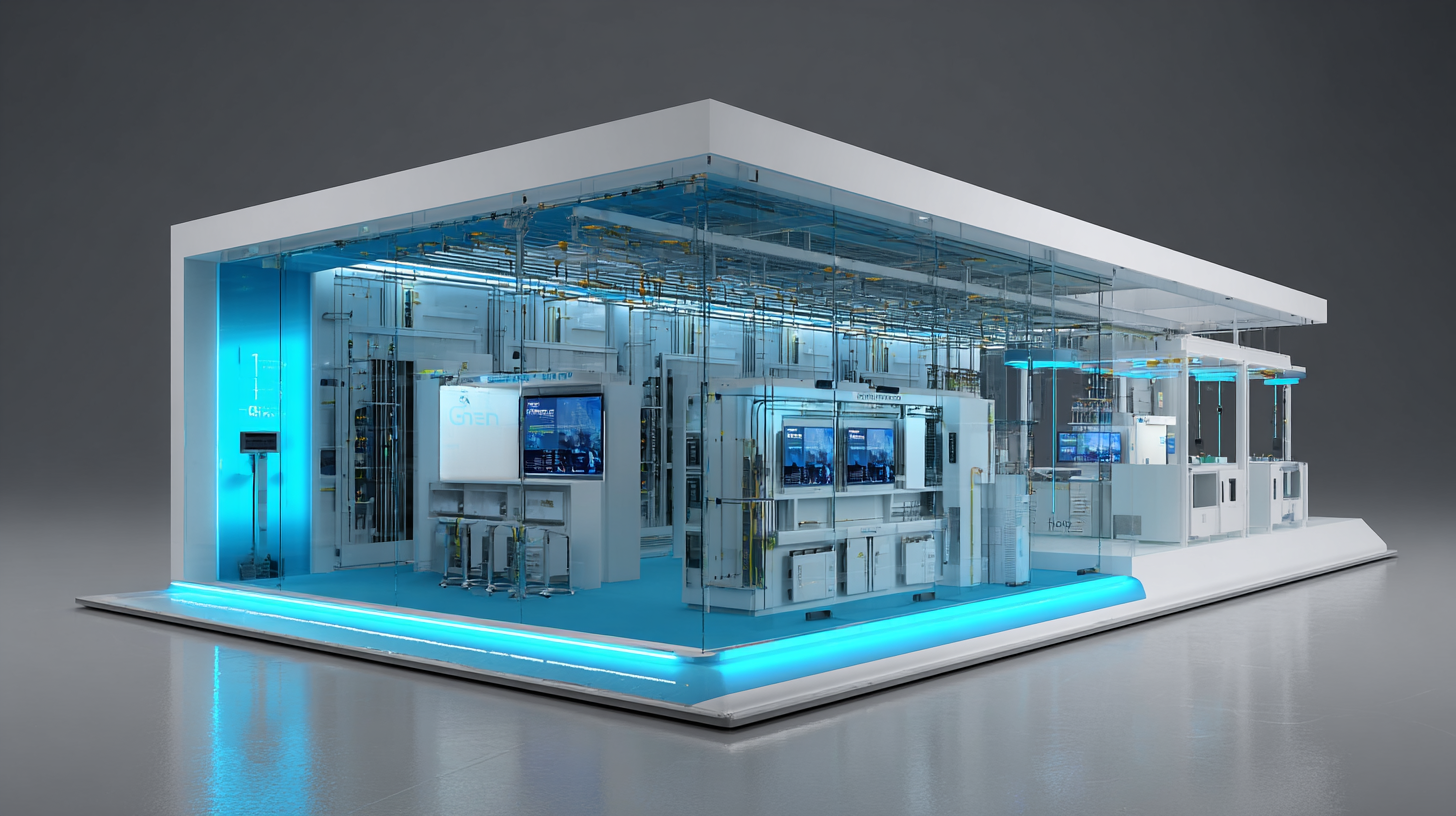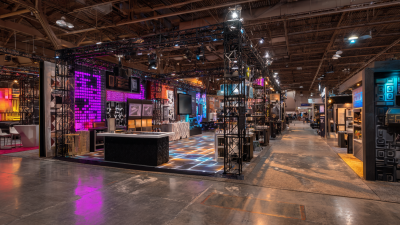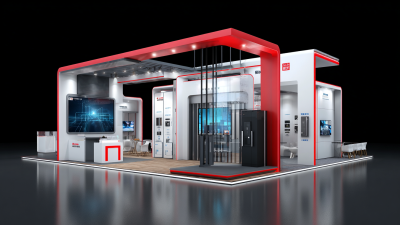
 In recent years, the exhibition and trade show industry has witnessed a significant evolution in design and functionality, with "Modular Stand Design" emerging as a frontrunner in these innovations. According to a report by Grand View Research, the global modular exhibition stand market size is expected to reach USD 1.89 billion by 2025, growing at a compound annual growth rate (CAGR) of 6.5%. This growth is driven by the increasing demand for flexible and sustainable solutions that can cater to diverse branding needs. Modular stands offer the advantage of easy reconfiguration and transportation, aligning with trends prioritizing both cost-effectiveness and environmental sustainability. As businesses seek to create impactful experiences in an increasingly competitive landscape, the exploration of modular stand design innovations is paramount for future success, allowing for customization and lasting impressions that resonate with audiences.
In recent years, the exhibition and trade show industry has witnessed a significant evolution in design and functionality, with "Modular Stand Design" emerging as a frontrunner in these innovations. According to a report by Grand View Research, the global modular exhibition stand market size is expected to reach USD 1.89 billion by 2025, growing at a compound annual growth rate (CAGR) of 6.5%. This growth is driven by the increasing demand for flexible and sustainable solutions that can cater to diverse branding needs. Modular stands offer the advantage of easy reconfiguration and transportation, aligning with trends prioritizing both cost-effectiveness and environmental sustainability. As businesses seek to create impactful experiences in an increasingly competitive landscape, the exploration of modular stand design innovations is paramount for future success, allowing for customization and lasting impressions that resonate with audiences.
The concept of modular stand designs is rapidly transforming exhibition spaces, reflecting a broader trend in the trade show industry. With the increasing demand for flexibility and adaptability in marketing strategies, modular exhibits have become essential for brands seeking to create impactful and engaging experiences. The rise of these designs allows exhibitors to easily customize their booths to fit different venue sizes and event themes, enhancing both functionality and aesthetic appeal.
Recent accolades, such as the Portable/Modular Awards, underscore the significance of innovative modular solutions in exhibition design. Since its inception, this recognition has celebrated the creativity of suppliers and designers who push the boundaries of portable and modular systems. The growing presence of these designs, showcased at events worldwide, demonstrates a shift towards more dynamic and sustainable exhibition practices that cater to the evolving needs of businesses in a competitive marketplace. As modular stand designs continue to advance, they promise to further revolutionize how brands connect with audiences in trade shows and beyond.
| Aspect | Trend/Innovation | Impact on Exhibition Spaces |
|---|---|---|
| Sustainability | Use of eco-friendly materials | Reduces environmental footprint, attracts eco-conscious visitors |
| Customization | Modular components for personalized design | Enhances brand identity and visitor engagement |
| Technology Integration | Augmented reality and interactive displays | Increases attendee interaction and information retention |
| Flexibility | Easily reconfigurable layouts | Allows for adaptation to various exhibition sizes and themes |
| Cost Efficiency | Reusable components | Reduces long-term exhibition costs for companies |
 The landscape of modular stand design is rapidly evolving, driven by the need for flexibility and efficiency in exhibitions and events. One of the key innovations in this domain is the integration of modular components that allow for easy customization and reconfiguration. This adaptability not only meets the unique demands of different events but also maximizes the use of space, making it an ideal solution for businesses looking to create impactful displays without the constraints of traditional stand designs.
The landscape of modular stand design is rapidly evolving, driven by the need for flexibility and efficiency in exhibitions and events. One of the key innovations in this domain is the integration of modular components that allow for easy customization and reconfiguration. This adaptability not only meets the unique demands of different events but also maximizes the use of space, making it an ideal solution for businesses looking to create impactful displays without the constraints of traditional stand designs.
Tips for Enhancing Flexibility:
The trend toward sustainability is rapidly gaining momentum in the world of modular stand design. As businesses strive to minimize their environmental impact, the use of sustainable materials has emerged as a key focus. From recycled plastics to sustainably sourced wood, companies are now prioritizing eco-friendly solutions that not only enhance aesthetic appeal but also contribute to a healthier planet. These innovations not only reduce waste but also offer the potential for lower costs in material production and logistics.
Tips for incorporating sustainable materials into your modular stand include starting with a thorough assessment of available options. Research local suppliers who provide recycled or sustainably sourced materials. Additionally, consider modular designs that allow for easy reconfiguration and reuse. This not only extends the lifecycle of your stands but also showcases your commitment to sustainability. Another tip is to ensure that all facets of your stand, from installation to dismantling, follow eco-friendly practices, reinforcing your brand's image as an environmentally conscious leader in the industry.
As the market continues to evolve, staying informed about sustainable trends and innovations will be crucial. Embracing materials that reduce environmental footprints will not only benefit your brand reputation but also align with the growing consumer demand for eco-conscious practices. With these considerations, businesses can effectively lead the charge toward a greener future in modular stand design.
The evolution of modular stand design has increasingly embraced data-driven methodologies, which enable designers to craft optimal exhibition experiences. By leveraging analytics, creators can gain valuable insights into audience behavior, preferences, and engagement patterns. This data not only informs layout and structure but also enhances the interactive elements of a stand, ensuring that it resonates with visitors on a deeper level. For instance, analytics can reveal peak traffic times, allowing for strategic staffing and interaction opportunities, ultimately making the experience more effective and enjoyable.

Incorporating data-driven design also allows for continuous improvement in modular stands. By analyzing post-event feedback and performance metrics, designers can iterate on their concepts, adapting to shifting trends and user expectations. This iterative process can enhance sustainability by utilizing resources more effectively and reducing waste. As we look toward the future, the integration of advanced analytics will be pivotal in shaping modular stand innovations, fostering environments that are not only visually appealing but also strategically designed to maximize engagement and impact.
The future of modular stand design is increasingly leaning towards customization, responding to the diverse needs of various industries. As businesses strive for individuality in showcasing their brand identities, personalized modular solutions are emerging as a vital tool. These designs offer flexibility, allowing organizations to adapt their stands to specific requirements, whether for trade shows, exhibitions, or retail spaces. By incorporating elements like interchangeable components and tailored aesthetics, businesses can create distinctive environments that resonate with their target audiences.
This trend is particularly significant in industries such as technology, fashion, and healthcare, where brand differentiation is crucial. Customization not only elevates the visual appeal of modular stands but also enhances functionality, ensuring spaces are optimized for engagement and interaction. Moreover, as sustainability becomes a focal point for many companies, customizable modular stands can be designed for reuse and reconfiguration, aligning with eco-friendly practices. Thus, the future of modular design is not just about meeting functional needs but also about creating personalized experiences that reflect the unique narratives of each brand.






